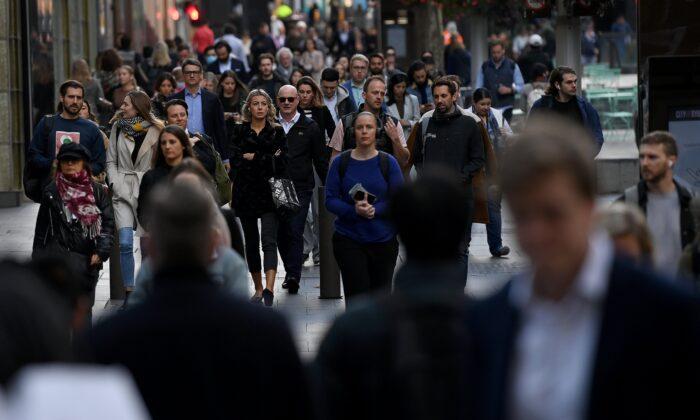The Australian unemployment rate for December 2021 fell to 4.2 percent, the lowest level since August 2008, just prior to the start of the Global Financial Crisis.
ABS Head of labour statistics, Bjorn Jarvis, said the economic recovery in New South Wales and Victoria, the two most populous Australian states, had a large influence on the national figures.
“Employment in these two states [increased] by 32,000 and 25,000 people between November and December,” Jarvis said. “Their employment was around where it had been in May having fallen 250,000 and 145,000 during the lockdowns.”
The underemployment rate also fell to 6.6 percent. However, the participation rate remained the same at 66.1 percent, which is 0.2 percent higher than before the start of the pandemic and 0.2 percent lower than the historic high in May and June 2021.
The change in employment and participation was particularly large for 15 to 24-year-olds and accounted for more than half of the total movements.
Around 38,000 more Australian of this age group were employed, bringing the youth unemployment rate down 1.5 percent to 9.4 percent, the lowest since November 2008. Youth participation rate also increase to 70.5 percent, the highest since September 2008.
“The large changes in employment and unemployment in December saw youth labour market measures return to levels we haven’t seen since the Global Financial Crisis,” Jarvis said.

Westpac Bank Senior Economist Justin Smirk said the fall in the underemployment rate was significant because he finds it to be a better explanator for wages growth than unemployment.
“It is worth noting that for the last three months, the ABS estimate of the working age population contracted slightly again. The closure of the international borders are still biting and it will be interesting see where this goes in 2022 as the borders reopen,” he added.
Commonwealth Bank Senior Economist Kristina Clifton said the key issues going forward are how disruptive and how long the Omicron outbreak will be.
“That said, household and business balance sheets are generally in good shape after previous rounds of government support.”





